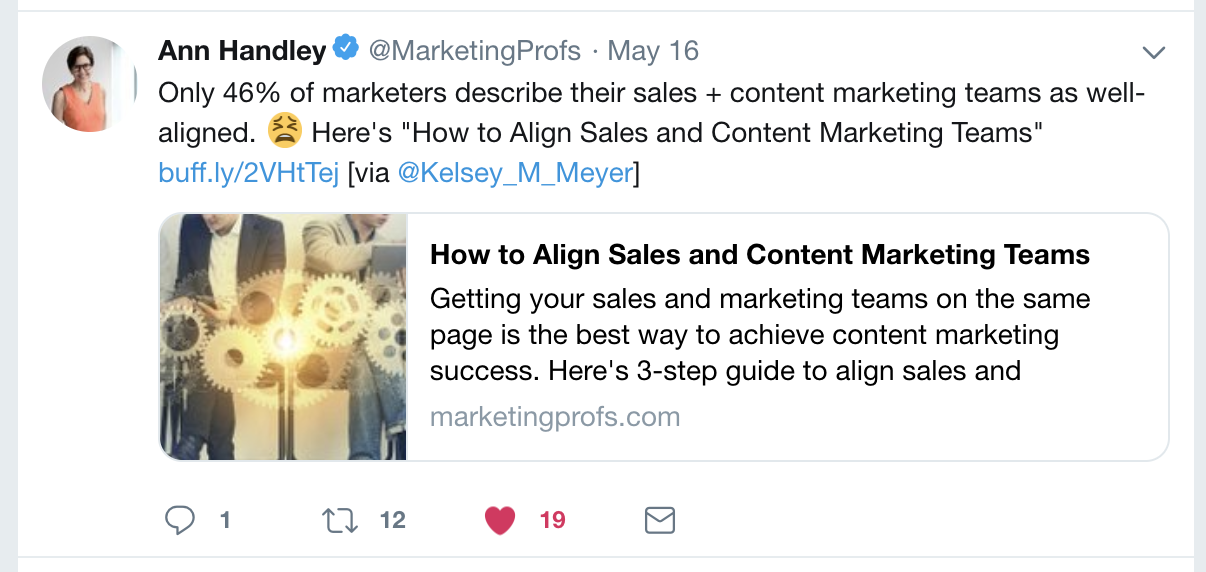I've said it before (and I never get tired of saying it again), guest-contributed content brings so much value to your content strategy. Creating original, high-quality articles as an outside guest author for a trusted online publication allows you to share your ideas, advice, and tips to a new, wider audience.
Getting published in these online publications can give your company third-party credibility from valuable and respected platforms that your current and new audiences trust and read. Having a content strategy that includes these guest-contributed articles is very important for staying top of mind in your industry.
Now that we've got that out of the way, let's discuss how you can determine what your guest-contributed articles are actually doing for your brand. We'll dive into the various analytics you can gather from each published piece and how the results benefit your strategy. Let me preface this by saying that in order to obtain some of this information and to truly get the most out of your guest-contributed content (and your content in general), you should be using a marketing automation platform like HubSpot and/or a website analytics platform like Google Analytics.
The following metrics all matter when determining the value of guest-contributed content, and here's what each can tell you:
1. Referral Traffic
Referral traffic shows you which outside sites are channeling traffic to your website. This is valuable information because if you're placing content on a specific site, this metric will show you whether it's actually sending traffic back to your site.
Say we published an article on Entrepreneur.com. If I wanted to determine whether that article was sending traffic back to our site, I would click on "Entrepreneur.com," which would then give me a breakdown of all the URLs from that domain name that sent traffic back to our site. This metric is important because it will tell us whether or not our guest-contributed article resonated enough with readers to prompt them to click a link in that post and then visit our website to learn more about us.
TIP: In order to see more referral traffic from a guest-contributed article, make sure you're linking to valuable content on your website (like relevant blog posts, pieces of gated content, or even your homepage) in the article when possible.
2. Organic Search Traffic
When creating your guest-contributed content, you should always include links back to your company's website where applicable. As you build more backlinks over time, the organic search traffic to your website will increase (again, something your marketing automation platform can help you track). This is a long-term effort, and you should compare your current metrics with your year-over-year data.
I also recommend that you try using SEMrush. It can tell you the keywords your guest-contributed content is ranking for, as well as provide an estimate of how much traffic a page is driving organically. This helps you determine whether the keywords you're using are aligning with those your audience uses in searches, and it lets you know that your content is popping up in search results, making it easier for your audience to find your content.
TIP: Keep track of the keywords that are driving the most organic traffic, as those indicate the major areas of interest for your key audience members and can continue to inform future content.
3. Direct Traffic
Did you know you can actually see your direct traffic increase after you've published a piece of guest-contributed content? Say an article of yours just got published on a certain site. That same day, while in your marketing automation platform, you see your direct traffic numbers increase. These two events are related, and in fact, we've seen this happen repeatedly at Influence & Co.
When people read an article of yours that is published online, they see your name and your company's name. If they really like the article, it isn't uncommon for them to want to learn more about you, so they Google you (this traffic is categorized as organic search traffic), click a link in the article to visit your site (this traffic is categorized as referral traffic), or type your website directly into the navigation bar (this traffic is categorized as direct traffic). Direct traffic is also a catch-all for traffic that your analytics platform can't categorize, so an increase in organic search or referral traffic that might come from your content will also likely result in a bump in direct traffic.
TIP: Make sure you're keeping track of your site's direct traffic numbers. That way, when a piece of guest-contributed content is published, you can zero in on how much traffic each piece is driving.
4. Social Shares
This is a metric that can be somewhat elusive to track. That's why we've included a way to track social shares of guest-contributed articles on our proprietary software, ICo Core.
Luckily, some online publications actually include the number of times an article has been shared on the page of the article. Most of the time, though, you'll notice when people are sharing your articles by getting a tag notification on social media. To more accurately track this metric, use Buzzsumo's Content Analyzer. It breaks down how many social shares your article has received. You can even adjust based on date range, too.
You want people to share your article out to their social networks, of course, because when they do, it means they liked your article so much that they think other people will find it valuable as well. Think about how much more inclined you are to read something online when you see that your friend has posted it. When people share your guest-contributed articles out on their social media channels, they're doing the heavy lifting for you by allowing you to tap into an even wider network than before. It's the modern-day "word of mouth" method. You can also use social shares info to plan your future content strategy because it tells you what sorts of topics are particularly interesting to your audience and which publications have an engaged following.
TIP: Make sure to include a link to your social channels in your author bio so readers can easily tag you or even follow you for more valuable content.
5. Comments
Again, this is a metric that you'll have to rely on the online publication sites to provide. Luckily, most of them do! When one of your guest-contributed articles receives some comments, that means it's inspired conversation and thought from readers. It's making them think and want to engage — to offer their two cents on the subject. Isn't that what content is about? Inspiring a dialogue in the space and provoking thought among readers who are consuming the content?
TIP: You should check back after an article is published, look for comments to respond to, and use those questions and comments as inspiration for future articles.
6. Who Shares/Interacts With Your Article
It's not just how many times people share your article or how many comments your article gets that are important. It matters who is sharing or interacting with your content, too. It's very possible to have a big name in your industry notice your article, admire it or find it valuable, and then either share it out or reach out to you about it in some way. This has actually happened to one of our own company leaders recently. Ann Handley of Marketing Profs shared one of our recent articles on Twitter, which put us on the radar of a potential client who reached out to learn more about our services.

It doesn't even have to be a big name. It could just be someone who works at a company that has been looking for a partner that does what you do and wants to use your services. Either way, this shows you're providing value to people, people who can possibly inspire mutually beneficial partnerships.
TIP: Make sure you respond to these people and acknowledge that they've engaged with or shared your article. This can help strengthen the relationship and open the door for future partnerships.
7. Keyword Rankings
Using an SEO strategy when putting together your guest-contributed articles will ensure you're doing everything you can to increase the ranking of your website for certain keywords. In order to do this, you have to make sure the keywords you're trying to rank for are being used in the anchor text when linking back to relevant pages on your website or blog. You'll know you're succeeding when you track the keywords via a tool like HubSpot, Moz, or SEMrush and notice that the on-site content you're linking to is ranking for those keywords.
TIP: Create a pillar blog post on a keyword you're trying to rank for and link to that pillar post in your guest-contributed articles. Over time, you should see that particular pillar post climb in the search rankings.
8. Qualified Leads Generated
In the referral traffic image above, there is a section that tracks "New Contacts." New contacts are the equivalent of new leads, as they are basically any site visitors who have converted for the first time from that particular outside source. By clicking on the source (for example, Entrepreneur.com), you can see the individual articles you've placed on that site and the number of leads (or "new contacts") that each has generated. This lets you know which of the topics you've discussed resonate best with your audience and are of the most interest to those reading your articles. Then, take it one step further. Once those new leads enter your sales process, keep an eye on whether/when they close to determine which of your guest-contributed articles are actually closing sales for your company.
TIP: Take note of the article topics that are generating the most new leads. They can help inform future content, which can add fuel to your email marketing and be distributed more proactively to generate even more new leads.
Learn more ways you can distribute your content by downloading " ."
."
Understanding the true value of your guest-contributed content can involve a lot of layers. But if you know how to find and track these metrics, doing so can result in a ton of benefits for your company.
Take your writing to the next level. Download our "4-Step Guide to Exceptional Content Marketing" and create higher-quality content.







.jpg)


